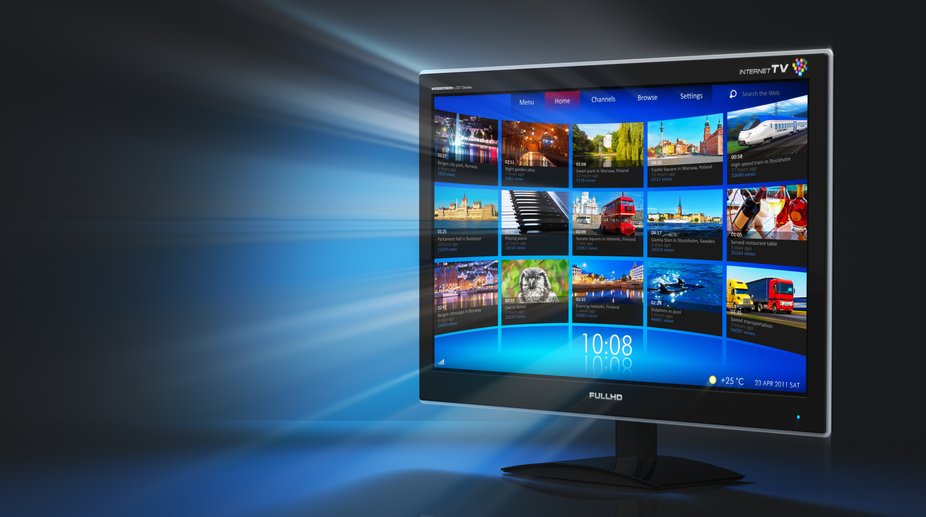Bigger television screens have always been much sought after. With a surge in consumers' disposable incomes, the demand for Smart Televisions has shot up, contributing around 18-20 per cent to sales in India's electronics sector, industry experts say.
Availability of Smart TVs at par with normal televisions has helped them become one of the preferred mainstream products not just in larger metros but also in smaller towns and tier II cities.
Advertisement
A Smart TV is at times also referred as connected TV or hybrid TV. These are televisions equipped with the ability to interact with the Internet, giving consumers access to a plethora of online content.
Akshay Dhoot, Head of Technology and Innovation, Videocon, said the country's middle class population, growing at nine per cent and with higher disposable incomes, has provided the necessary boost in the demand for Smart TVs.
Also a 12-15 per cent dip in prices of Smart TVs as compared to two to three years ago, has led to a surge in sales.
The price of Smart TVs depends on the screen size. Panasonic India says its 32-inch Smart TVs start at around Rs 30,000, while the 4K Smart TV starts from around Rs 70,000 and goes up to Rs 3 lakh.
Speaking about the impact of Smart TVs on the overall industry, Dhoot said: "The contribution of Smart TVs to overall sales has gone up to 18-20 per cent from 12-14 per cent last year and the share is expected to move up significantly. Also, with increasing innovation and technological improvements in the consumer electronics industry, the cost of Smart TVs is expected to see a downward trend in future as well.
"Factoring these, we can say that Smart TVs are well on their way to becoming one of the preferred mainstream products in India."
Industry experts were of the view that complementing India's growing internet-readiness and faster digitalisation, TVs are turning smarter with no requirement of any peripheral devices to communicate and relay information, leaving the conventional TV sets far behind, which offer only linear viewing.
"The contribution of Smart TVs has gone up to 30 per cent in the Indian scenario," Neeraj Bahl, Business Head – Consumer Electronics, Panasonic India, told IANS.
"If we talk globally, people have already shifted to 'smart' as a technology and penetration in developed countries is almost 100 per cent. With the development of data network, we will also see a boom in the Indian market," he added.
According to an India Brand Equity Foundation report on the electronics sector, India's television industry is expected to expand to $16.8 billion by 2020 from $9.4 billion in 2016.
But what is keeping consumers away from adopting Smart TVs on a larger scale?
"Lack of awareness from users and retailers, erratic supply of electricity in tier-II and III cities as well as rural areas and cost-to-utility are some of the basic parameters keeping the average Indian consumer away from Smart TVs," said Jagdish Rajpurohit, founder of CloudWalker, a tech start-up which has a smart TV range under the brand name Cloud TV.
"Currently, Indian manufacturers have no incentive to produce Smart TVs as the demand is too low for the production to be feasible. However, with increased Internet networks, explosive growth of OTT (over-the-top) content services and availability of VoD (video on demand) content platforms, users are now realising the multi-utility of Smart TVs and are getting inclined towards its purchase," Rajpurohit told IANS.
"With continuous innovations, the technology is becoming affordable every year. Urban India is ready to endorse this product. Soon, rural India will also be ready with further increase of Internet penetration in the country," Bahl added.











